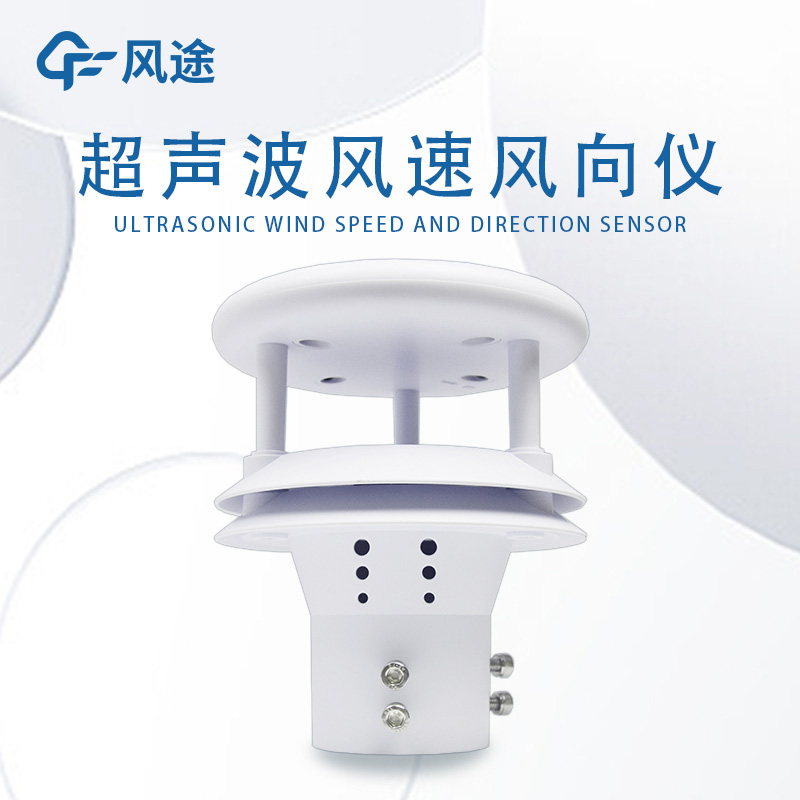Tianqiong Sensor IOT Technology Co., Ltd
Sales Manager:Ms. Emily Wang
Cel,Whatsapp,Wechat:+86 15898932201
Email:info@fengtutec.com
Add:No. 155 Optoelectronic Industry Accelerator, Gaoxin District, Weifang, Shandong, China

Sales Manager:Ms. Emily Wang
Cel,Whatsapp,Wechat:+86 15898932201
Email:info@fengtutec.com
Add:No. 155 Optoelectronic Industry Accelerator, Gaoxin District, Weifang, Shandong, China
time:2025-07-18 08:56:48 source:Weather Station viewed:238 time
Faced with numerous types of anemometers on the market, how can one select a product that meets their own needs? First, let's understand the common types of anemometers.
Mechanical Anemometer
Among mechanical anemometers, the cup anemometer is relatively common. It relies on the rotation of cups under the action of wind, which drives the sensor to output pulse signals. Wind speed is proportional to the rotation speed, and wind speed is calculated based on this relationship. It has a simple structure, low cost, and is easy to operate, making it suitable for scenarios with low precision requirements and relatively mild environments, such as agricultural weather stations and small ventilation systems. However, its mechanical components are susceptible to erosion by dust and rain. After long-term use, the frictional resistance increases, which will lead to measurement deviations. In environments with strong winds or large temperature changes, its stability is poor.
Ultrasonic Anemometer
Ultrasonic anemometers calculate wind speed and direction using the time difference of sound wave propagation in the air flow. This type of anemometer has no mechanical moving parts, avoiding wear issues, and features high reliability and long service life. It is suitable for scenarios requiring continuous operation, such as urban environmental monitoring and industrial ventilation ducts. It is highly sensitive to air flow direction and can accurately detect instantaneous changes. However, in rainy or snowy weather or when there are many particles in the air, the propagation of sound waves will be disturbed. It is necessary to ensure data accuracy through algorithm compensation or adding self-cleaning functions.
Laser Doppler Anemometer
Laser Doppler anemometers are based on the laser Doppler effect, calculating wind speed by measuring the frequency change of laser scattered by tiny particles in the air flow. It does not need direct contact with the air flow, enabling non-intrusive measurement, and can accurately detect instantaneous changes in high-speed air flow. It is suitable for high-precision scenarios such as aerospace wind tunnel experiments and gas turbine flow field analysis. It has high spatial resolution and can obtain the three-dimensional velocity distribution of the air flow. However, the equipment cost is high, and it has strict requirements on the operating environment, needing to avoid strong electromagnetic interference and vibration. Moreover, the measurement results are easily affected by the concentration of particles in the air flow, and additional tracer particles need to be introduced in clean air flow environments.
In summary, choosing a suitable anemometer requires comprehensively considering the characteristics of each type and actual needs. Mechanical anemometers, with simple structures and low costs, are suitable for scenarios with low precision requirements and mild environments, such as agricultural weather stations, but their mechanical components are prone to wear and have poor stability in strong winds or large temperature differences. Ultrasonic anemometers, without mechanical components and with long service lives, are suitable for continuous operation scenarios such as urban environmental monitoring, and are sensitive to wind direction. However, they are easily disturbed in rainy, snowy, or particle-rich environments, requiring algorithm compensation or self-cleaning functions. Laser Doppler anemometers, with non-intrusive measurement and high precision, are suitable for high-precision scenarios such as aerospace wind tunnel experiments and have high spatial resolution, but they are costly, have strict environmental requirements, and are greatly affected by particle concentration.

Miniature automatic water quality monitoring station is a one-stop online water quality monitoring system compliant with national standards, capable of periodic or continuous monitoring of parameters such as temperature, pH, dissolved oxygen, COD, and ammonia nitrogen. Based on optical and electrochemical principles, it achieves automatic water sampling and distribution, pre-treatment, data monitoring, and remote transmission. It is suitable for environmental protection, water conservancy, and other water bodies requiring high-density, low-cost, and high-frequency monitoring....
The Buoy Type Water Quality Online Monitoring System is a self-developed miniaturized automatic water quality monitoring system, leveraging years of R&D experience in meteorological stations. It adopts a pre-integrated outdoor monitoring design with a small footprint, and integrates multiple tec...
Portable Weather Station is a highly integrated, low-power, and rapidly deployable high-precision automatic meteorological observation device. It is suitable for various scenarios such as emergency short-term meteorological observation, mobile meteorological monitoring, and microclimate environment monitoring. It is primarily used for data acquisition in fields such as meteorology, agriculture and forestry, environmental protection, and emergency monitoring....
The Rainfall Real-time Monitoring System is a tool that comprehensively uses sensing, transmission, and data analysis technologies to conduct real-time and accurate monitoring of rainfall, widely applied in meteorological forecasting, flood control and disaster reduction, water resource management,...